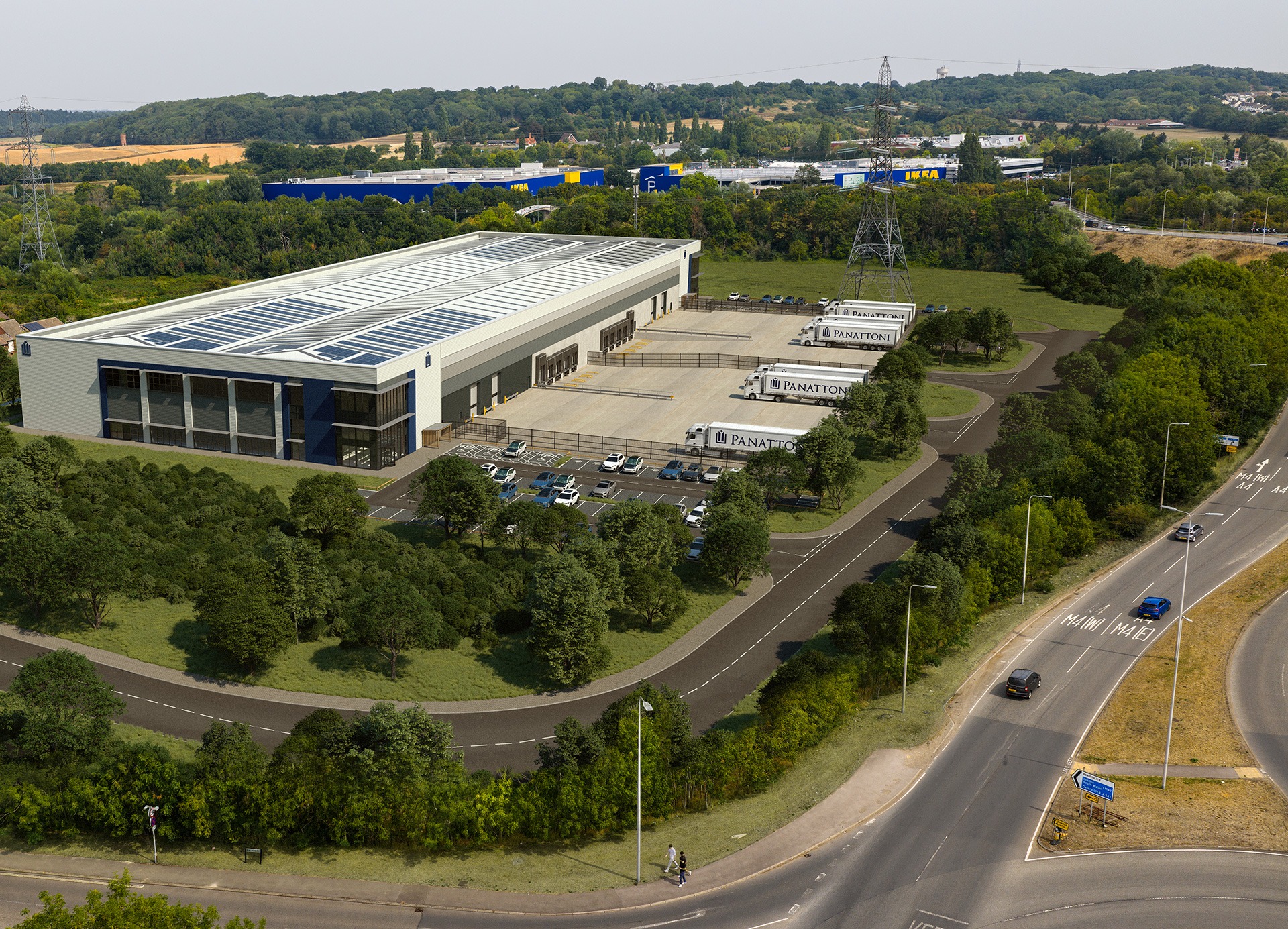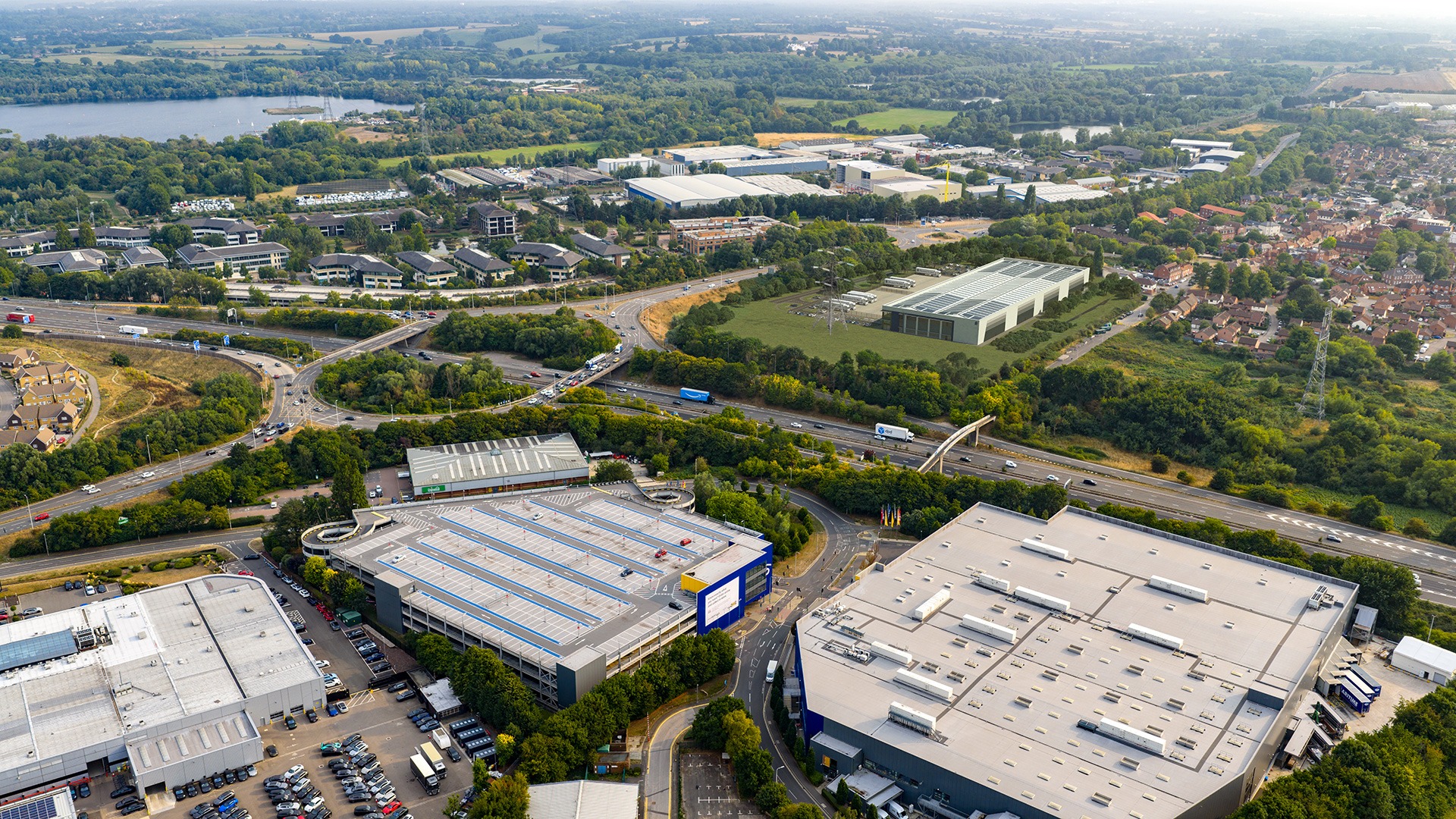Panattoni has secured planning consent for Panattoni Park Reading, a major speculative logistics development that will deliver 9,890 m² of new Grade A warehouse space in one of the United Kingdom’s most supply-constrained industrial hubs. Strategically located near junction 12 of the M4 motorway, the project will comprise two units of 4,676 m² and 5,214 m², designed to EPC A and BREEAM Excellent standards — a specification that positions it firmly within the next generation of sustainable logistics infrastructure.
The development will integrate solar panels (~200 kVA), rainwater harvesting, EV charging points, and 1 MVA power capacity, responding directly to occupiers’ rising demand for energy-secure and ESG-compliant facilities. Construction is scheduled to begin in Q1 2026 and complete by Q2 2027. Savills, Hatch Real Estate, and Lambert Smith Hampton have been appointed as leasing agents.
“Panattoni Park Reading will bring high-quality, sustainable logistics space to the Thames Valley — a market where demand continues to outpace supply,” said Alex Mitchell, Associate Development Director at Panattoni. “By delivering speculatively, we’re ensuring occupiers can move quickly into ready-to-operate facilities that support both their operational performance and sustainability goals.”
Why Reading Is Becoming a Prime Logistics Hotspot
Reading and the broader Thames Valley corridor are experiencing sustained demand growth against a backdrop of limited new supply. Total availability in Greater Reading increased from 49,600 m² in 2023 to 76,400 m² in 2024, but this remains well below occupier requirements. According to Neil Seager, Managing Partner at Haslams, prime industrial rents in Reading are “likely to exceed £220–£230 per m² (€250 per m²)” as new, higher-specification schemes enter the pipeline. In comparison, prime logistics space in West London now commands £255–£295 per m² (€290–€340 per m²).
A significant driver of this shift is the displacement of industrial users from West London, where large-scale data centre developments are competing for land and grid capacity. As a result, 3PLs, retailers, and e-commerce operators are expanding further west along the M4 corridor, with Reading emerging as a strategic alternative that combines location, connectivity, cost, and energy resilience.
Rental Outlook and Occupier Costs
Recent leasing transactions in the Reading and Theale submarkets show mid-range logistics space securing rents of around £110–£150 per m² (€125–€170 per m²). New-build, prime Grade A developments like Panattoni Park Reading are already achieving rents close to £220 per m² (€250 per m²), with market analysts forecasting growth of 10–15% by 2027. If this trajectory continues, top-tier stock could reach £250–£260 per m² (€285–€295 per m²).
At full occupancy, Panattoni Park Reading could generate an estimated annual rental income of €2.4–3.0 million, depending on final lease terms and tenant mix. Occupiers are increasingly willing to absorb these higher costs as part of broader logistics strategies focused on sustainability, power availability, automation readiness, and last-mile efficiency rather than headline rent alone.
Demand Drivers and Market Dynamics
Despite UK logistics vacancy edging up to around 7.5% in mid-2025, demand for Grade A, ESG-ready, automation-capable space remains robust. According to JLL’s UK Logistics Outlook 2025, occupiers are increasingly consolidating operations into modern hubs with strong power infrastructure, sustainable design, and scalable automation capabilities.
“Occupiers are far more selective now — location, sustainability, and power capacity rank on equal footing with cost,” noted a regional industrial research analyst at JLL. “That’s why well-located, future-proofed schemes like Panattoni Park Reading are expected to attract significant pre-letting interest.”
Additional structural drivers — including e-commerce growth, nearshoring, and the demand for resilient supply chains — continue to underpin leasing activity. The Thames Valley’s proximity to London, major ports, airports, and national motorway networks makes it one of the most strategically positioned logistics markets in the UK.
Institutional Investment and Market Outlook
Institutional investors remain highly active in UK logistics, which continues to outperform other commercial real estate sectors. According to Savills Q2 2025 data, prime logistics yields are stable at around 4.5–5%, while assets with advanced ESG features and secured power infrastructure are achieving premium valuations.
Longer-term forecasts are also optimistic. JLL projects that demand for modern logistics space could rise by 20–25% by 2030, driven by automation adoption, reshoring of manufacturing, and evolving distribution models. Within this landscape, the Thames Valley is well positioned to capture a disproportionate share of occupier demand due to its infrastructure quality and chronic undersupply.
Project Features and Community Impact
Panattoni Park Reading is designed with flexibility at its core. The two units will offer 10-metre clear internal heights, 50-metre yard depths, and infrastructure suitable for single or multi-tenant occupation. Beyond the warehouse space itself, the development will incorporate a new public footpath connection between Hoad Way and High Street, extensive landscaping, and is expected to create approximately 150 permanent jobs once operational.
The scheme has also been designed to meet future regulatory standards, ensuring tenants can comply with evolving ESG requirements and operational benchmarks from the moment they take occupancy.
Essential Insights
Panattoni Park Reading is one of the most strategically significant logistics developments to emerge in the Thames Valley in recent years. With prime rents approaching £220 per m² (€250 per m²) and market conditions signalling continued rental growth, the project is ideally positioned to attract blue-chip occupiers and generate over €2.5 million in annual rental revenue.
As the UK logistics market enters a new era where power capacity, sustainability, automation, and connectivity carry as much weight as location, Panattoni’s latest development is set to become a benchmark for the sector — and a clear indicator of how demand will evolve toward 2030.



